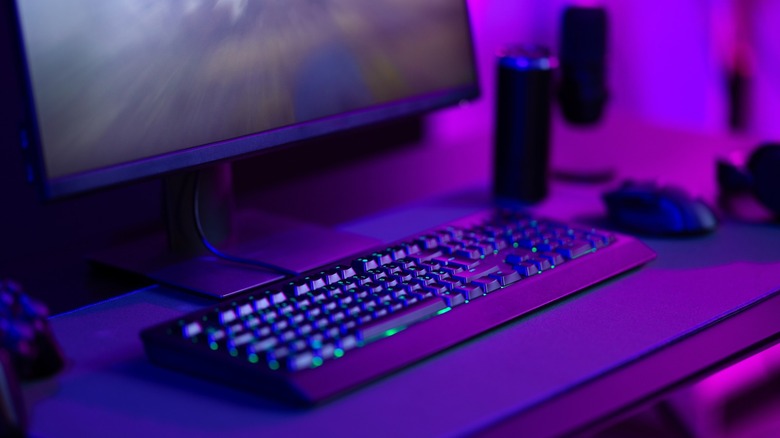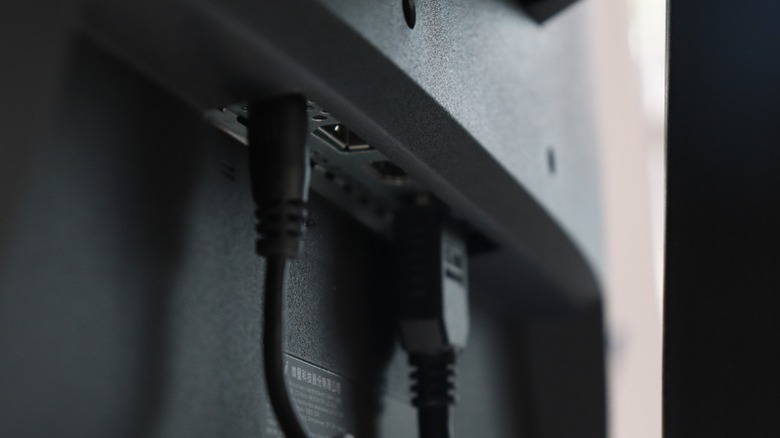Can You Use Monitor USB Ports For A Mouse And Keyboard?
It's true that thin and light laptops in recent years, like the MacBook Air, have changed the game for portability and performance — especially with the massive gains in the battery department. However, it's an inarguable fact that docking your daily machine to a larger screen, complete with a dedicated keyboard and mouse, will skyrocket your productivity. A bigger monitor can also deliver a higher resolution and faster refresh rates in some cases.
Some of the best 1440p monitors you can buy are now available at more affordable prices and come in various screen sizes and aspect ratios to better suit your needs. Hooking up an external display to your desktop computer or laptop is as easy as connecting the two via an HDMI or DisplayPort cable. Some USB-C monitors for Macs make the setup process even easier.
You may have also noticed one or more USB ports on your monitor; they're likely part of the USB hub functionality. This allows you to connect peripherals, such as keyboards, mice, webcams, and more, directly to your monitor. This can be a viable solution if your laptop or desktop PC itself is stashed away further than the cables on your keyboard and mouse can conveniently reach. A USB hub will also allow you to connect more devices at once, especially if you're running low on available ports on your PC.
How do the USB ports on a monitor work?
A monitor with built-in USB hub functionality works very similarly to how docking stations for laptops work. You first connect your monitor to your desktop PC or laptop via a USB-B to USB-A cable — this facilitates the connection. Then, any device you plug into your monitor's USB ports will function as if you've plugged them directly into your PC.
Technically, there will be added latency to any devices you connect to your monitor. However, the actual input lag shouldn't be great enough to affect real-world performance, even in games. Other ways to utilize your monitor's USB ports include connecting USB drives to transfer media quickly or charging smaller devices, such as your phone or a pair of wireless earbuds.
Certain monitors that connect solely via USB-C don't need a separate upstream connection to your PC. They will also handle charging if the monitor's USB-C port supports Power Delivery. This can provide for a cleaner and truly seamless docking experience. You can even daisy chain monitors this way.
That said, not all monitors that have a USB-A port can mediate peripheral connectivity to your PC. If you notice no upstream USB-B port on your monitor, then the single USB-A port is likely a service port — used for firmware updates. Although it does not transfer data to your desktop or laptop, you can still use it to power devices like an RGB light strip, which is what I did.

